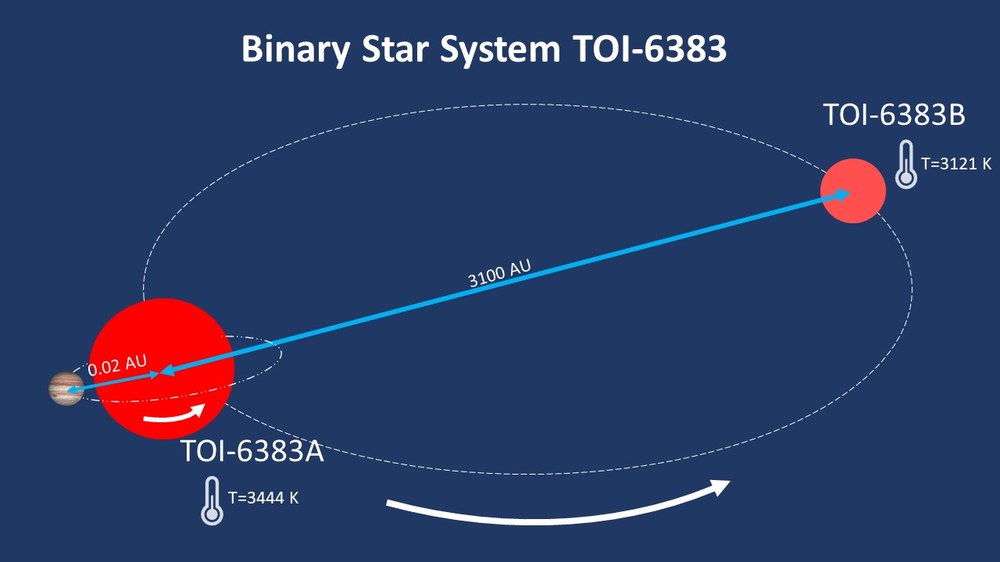Getting closer to the explanation of how giant planets can form around M-dwarfs
The star TOI-6383A is a cool dwarf star with less than half the mass of the sun and less than the radius of the sun. It forms a binary star system with a second, even cooler dwarf star. TOI-6383A is orbited by a giant planet of similar mass and radius as Jupiter.
Lia Marta Bernabò, PhD student in the Department of Extrasolar Planets and Atmospheres, is the first author of the article entitled ‘Searching for GEMS: TOI-6383A b, a giant planet transiting an M3-dwarf star in a binary system’. It was accepted for publication by the Astronomical Journal on 25 September 2024.

This raises questions about the formation of planets in this environment. There are two main ideas as to how these planets could have formed. One way is planet formation in an accretion model, triggered by a massive core. However, this model has problems with the mass budget and time scales for the formation of M dwarfs. The mass budget problem means that a dwarf star typically has a less massive protoplanetary disc around it, which means that there is not enough material to form a giant planet. In fact, only about 20 such planets have been found so far.
The other pathway to the formation of giant planets around M dwarfs could be the rapid formation mechanism in which a massive protostellar disc disintegrates into clumps under its own gravity.
This newly discovered planet helps to understand how giant planets form and evolve around dwarf stars. To make more precise statements, around 40 such systems would be needed, twice as many as previously known, as determined by a study by Kanodia et al. 2024. The planet was discovered by the Transiting Exoplanet Survey Satellite (TESS) and confirmed by a combination of ground-based follow-up photometry and precise radial velocity measurements.
You can read more about this planetary system in the article by Lia Bernabò and colleagues at https://arxiv.org/pdf/2409.16889
